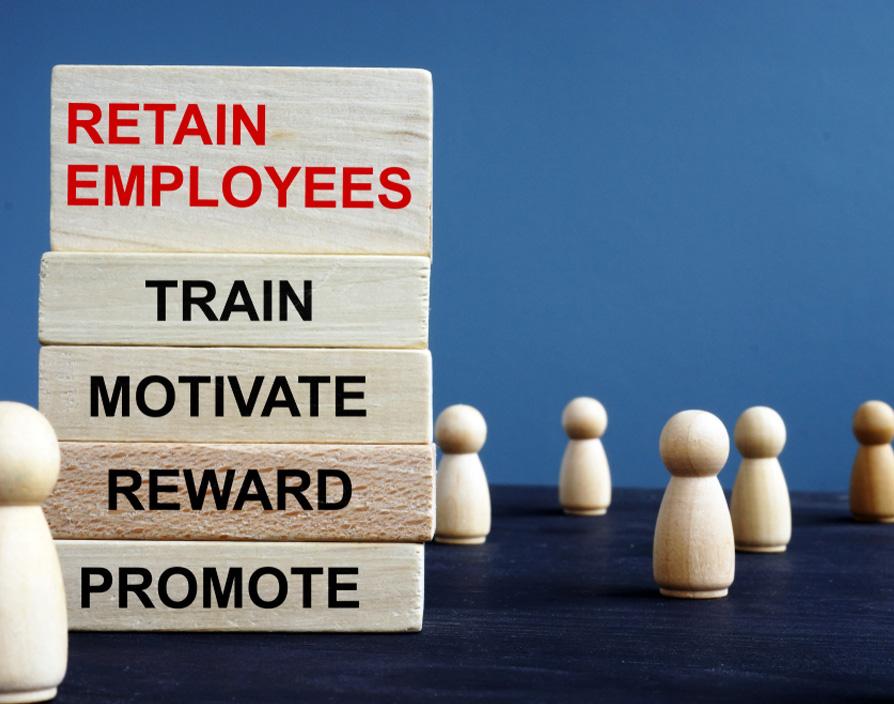Here, Rachel Murray, Head of Employee Health and Wellbeing at Bupa, shares ways managers can boost employee satisfaction and retention this year and beyond.
From micromanagement, lack of recognition to poor workplace culture, lots of factors can negatively impact team wellbeing. With employee retention becoming one of the biggest business challenges in 2022, it’s more important than ever to be aware of any negative habits that may influence an employee’s decision to work for you.
After analysing Google data over the last 12 months, new research from Bupa reveals which workplace habits are perceived the most negatively by employees:
Lack of career development opportunities
Google data highlights a concern for many UK employees – over the last 12 months, searches for ‘work progression´ have soared by 200%. When employees work hard and aren’t rewarded with the opportunity to progress their career, naturally it can impact their wellbeing and motivation levels.
There are lots of ways you can encourage your team to develop and share their skills to help keep your company strong and your employees challenged, engaged, and motivated.
Poor recognition and reward systems
Google data highlights a growing desire to be adequately compensated for hard work, with searches for ‘rewards in the workplace’ increasing by 67% over the last year. Rewards can be anything from formally acknowledging an employee’s work, to financial incentives, access to health and wellbeing services or team activities.
Rewards – whether financial or not – help your employees feel recognised and can help to boost wellbeing when used appropriately. Providing your rewards systems are used fairly – for example, all employees are recognised regularly, and constructive feedback is given where needed – they can be a successful and simple way to retain your company’s talent.
Limited access to health and wellbeing services
In the last 12 months there has been a 50% rise in Google searches for ‘health and wellbeing in the workplace’. The last few years has shown us that health is paramount and employees increasingly want to see that their employer shares this value and can provide workplace support.
Health and wellbeing services can range from medical and dental cover, to access to mental health services such as employee assistance programmes (EAP). If you show your employees that you take their health needs seriously with these services, you’ll find your business benefits from a healthier, happier and more motivated workforce that may be less likely to suffer from absenteeism or a higher staff turnover.
Micromanagement in the workplace
Micromanagement describes a management style which closely monitors employees – and Google search volumes show that more of us are concerned about it, with a 40% surge in searches since April 2021.
Examples of micromanagement include tracking working hours to overzealous task supervision which can harm your employee’s sense of autonomy, wellbeing and sense of trust in you.
Negative workplace culture
Google searches for ‘workplace culture’ have increased 30% since April 2021. A company’s working environment can have a huge impact on employee wellbeing, job satisfaction and engagement. There are lots of factors than can influence a negative workplace culture, from lack of communication, a tense atmosphere, poor management, and a lack of work-life balance. This can lead to higher staff turnover levels and impact your ability to attract and retain the best talent.
How to support talent retention in the workplace – according to Rachel Murray, Head of Employee Health and Wellbeing at Bupa
There are lots of factors that can harm employee wellbeing and satisfaction. Rachel Murray, Head of Employee Health and Wellbeing at Bupa shares five simple ways managers can boost their team’s satisfaction, employee retention strategy and attract new talent:
Provide training for business leaders
Investing time in training your business leaders helps to give assurance that your company shapes policies, management style and workplace culture are all centred around enhancing employee wellbeing, protecting employee retention and providing a positive working environment.
Give your team access to health services
With employee health and wellbeing initiatives growing in prominence, businesses should follow a ‘health-first’ approach to their people management, so all employees have access to services that support their mental and physical health.
Health services like EAP and health insurance mean that your team will be motivated to seek any help with their health at an earlier stage, helping to reduce levels of absenteeism and presenteeism.
Recognise individual achievements
Taking the time to recognise the individual and group achievements of your team not only helps to boost wellbeing, but also has a positive influence on productivity. From team-wide emails to shout-outs on a department call, showing your employees that you value their contributions can have a real benefit to their sense of wellbeing in the workplace.
Make time for your team and provide feedback
Regular catch ups with your team give you the opportunity to discuss and review your team’s workload, check-in on their wellbeing and any career goals they may have. They can also help you to get to know your team members better, helping you to build trust, better understand when they might need help and easily give feedback, when required.
Promote an open culture
Teams that communicate effectively collaborate in a more effective and productive way. What’s more, employees and managers who share open dialogues may be less likely to fall into the habit of micromanagement.
When everyone feels comfortable to be themselves, chat during the day and share ideas, companies will enjoy a positive working culture. Managers can encourage team connections by starting conversations between employees, along with requesting and acknowledging feedback from your team to help all employees feel appreciated and listened to.
Share via:








































